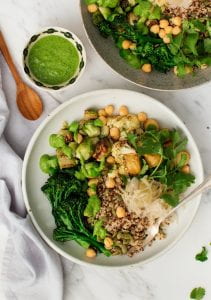You’ve probably heard it all your life — eating fruits and vegetables is important for good health, however the experts say, most of us still aren’t getting enough. One solution to this problem it to buy flavorful fresh picked produce at the peak of season at your local or online farmer’s market. To find a market to shop at near you, go to the National Farmer’s Market Directory at https://www.ams.usda.gov/local-food-directories/farmersmarkets, and do a search. If you want to try an online market shopping experience check out Cornell Cooperative Extension Schoharie and Otsego Counties’ new Online Farmers Market through the Source WhatsGood website at https://sourcewhatsgood.com/ or the Schoharie Fresh Online Farmers’ Market at https://schohariefresh.com/.
Beware though, this solution to the challenge of eating enough fruits and vegetables can create yet another unforeseen challenge. Many times we visit to the market and see all the beautiful, fresh fruits and veggies in season and on sale, and we over buy. We gather gorgeous greens, radiant reds, and yummy yellows then bring them home, stick them in the refrigerator, or leave them out on the counter, only to toss them in a few days because they’ve wilted or become moldy. The life’s solution to this is to keep it fresh. Here are a few tips on keeping produce fresh:
- In general, avoid washing fruits or vegetables until you are ready to eat them because it removes the plant’s natural protective coating, making produce more susceptible to damage and degradation on your counter or in your fridge. The exception to the rule is the leafy salad greens like spinach and different varieties of lettuce. They will keep better and longer if you wash and dry them completely before storing.
- Some fruits and vegetables emit ethylene gas as they ripen, which can hasten the over ripening of other produce. It is a good practice to store ethylene emitters away from other produce. Some examples of these ‘emitters’ are apples, apricots, blueberries, cantaloupe, grapes, honeydew, unripe bananas, nectarines, peaches, pears, plums, and tomatoes.
- You can slow the evaporation from your refrigerated fruits and vegetables by placing them in the crisper drawers, which are typically humidity-controlled. Also do not place fruits and veggies in airtight plastic bags, this will actually speed up decay. You can store produce in plastic bags with holes punched in them (the University of California at Davis has done the math: 20 pin-sized holes in a medium bag should do the trick).
Knowing how long produce will last and where and how to store it for maximum shelf life is the key. There are fruits and vegetables need to be eaten right away, others have a slightly longer consumption window, and some can be stored for weeks and even months. For more information on storing produce check out this factsheet on Storing Fresh Fruits and Vegetables for Best Flavor at cceschoharie-otsego.org/storing-fruits-and-veggies.
If your fresh produce is ripening to fast, and you can’t consume it all before nature’s expiration date, your freezer can extend that date for certain fruits and vegetables. For tips on freezing your produce in the nick of time or before check out these Handy References for freezing produce at http://ccetompkins.org/resources/handy-reference-for-freezing-vegetables and http://ccetompkins.org/resources/handy-reference-for-freezing-fruits.
Before that happens though, try Cornell Cooperative Extension Schoharie and Otsego Counties’ recipe for this tasty vegetable treat to use more of that fresh farmer’s market produce before it expires or needs to be frozen.

Healthy Corn Dip
Makes 32- ¼ cup servings
Ingredients
¼ cup olive oil
⅓ cup balsamic vinegar
4 cups of fresh cooked corn, cut off the cob (approx.4-5 large ears)
1 (15-ounce) can black beans, drained
1 large red pepper, chopped
1 large green pepper, chopped
1 large red onion, chopped
¼ cup fresh cilantro, chopped
Instructions
1. Shuck 4-5 large ears of corn, remove silk. Fill a large pot halfway with unsalted water and bring to a rolling boil. Add the ears of corn to the boiling water. Let the water return to a full boil, and cook 10 minutes. Remove from water, allow to cool cut off cob using a sharp knife or corn cutter, include corn milk in measured 4 cups for recipe.
2. In a large bowl add all ingredients, mix well.
3. For best results prepare the day before, storing in the refrigerator. If desired set out at room temperature for 1 hour before serving, allowing dip to temper.
Notes:
• Serve with tortilla chips, lettuce, tossed salad, celery sticks, etc.
• Corn on the Cob leftover and cut off the cob from the night before or 3 (11-ounce) cans of Shoepeg white corn, undrained may be substituted for fresh cooked corn.
Nutrition Facts (per serving):
Calories: 60, Total Fat: 2g, Saturated Fat: 0g, Cholesterol: 0g, Sodium: 125g, Total Carbohydrate: 9g, Dietary fiber: 1 g, Sugars: 2g, Protein: 2g, Vitamin A: 40 RE, Vitamin C: 15 g, Calcium: 0 g, Iron: .36 mg
If you are interested in more recipes, nutritional information, or classes, visit our website at www.cceschoharie-otsego.org or contact Michelle Leveski, Nutrition Program Educator by calling 518-234-4303 ext. 115 (please leave a message), or emailing her at mml39@cornell.edu.






